Best Things to Do in Kusadasi
Introduction
The resort of Kusadası on the Turkish Aegean is as multifaceted as a holiday destination can get. You’ve got the universal joys of long sandy beaches, countless restaurants, dreamy views, family water parks, and golden sunsets. But minutes away is the famous ancient city of Ephesus, a Roman provincial capital that has left behind an archaeological site of accurate scale and grandeur. So on the same day, you can ponder the columns of the Library of Ephesus, discover a forgotten bay in the biodiverse Dilek National Park, zip through the scrub on a quad bike, and lie back on a sun lounger watching the sun setting over the Aegean. Read more about Turkey’s Best Beach Resort Guide.
Ephesus
One of the largest and most important archaeological sites in the Eastern Mediterranean lies a few minutes out of Kuşadası at Selçuk. Ephesus is a UNESCO World Heritage Site, protecting a city founded around 3,000 years ago, becoming one of the 12 members of the Ionian League, and reaching its apogee in the Roman era as the provincial capital of Asia. Ephesus was a coastal city, which is hard to imagine now as the coastline has drifted several kilometers west.

Awaiting you is the solemn façade of the Library of Celsus, the jaw-dropping 25,000-capacity theatre, and the ruins of the Temple of Artemis, one of the Seven Wonders of the Ancient World. There are tons more to see, like the sophisticated aqueduct system, the Trajan Fountain, the bathhouses, the 6th-century Basilica of St John, preserved terrace houses with frescos, and Selçuk’s Medieval Ottoman fortifications. Read more about Ephesus
Ephesus Archaeological Museum
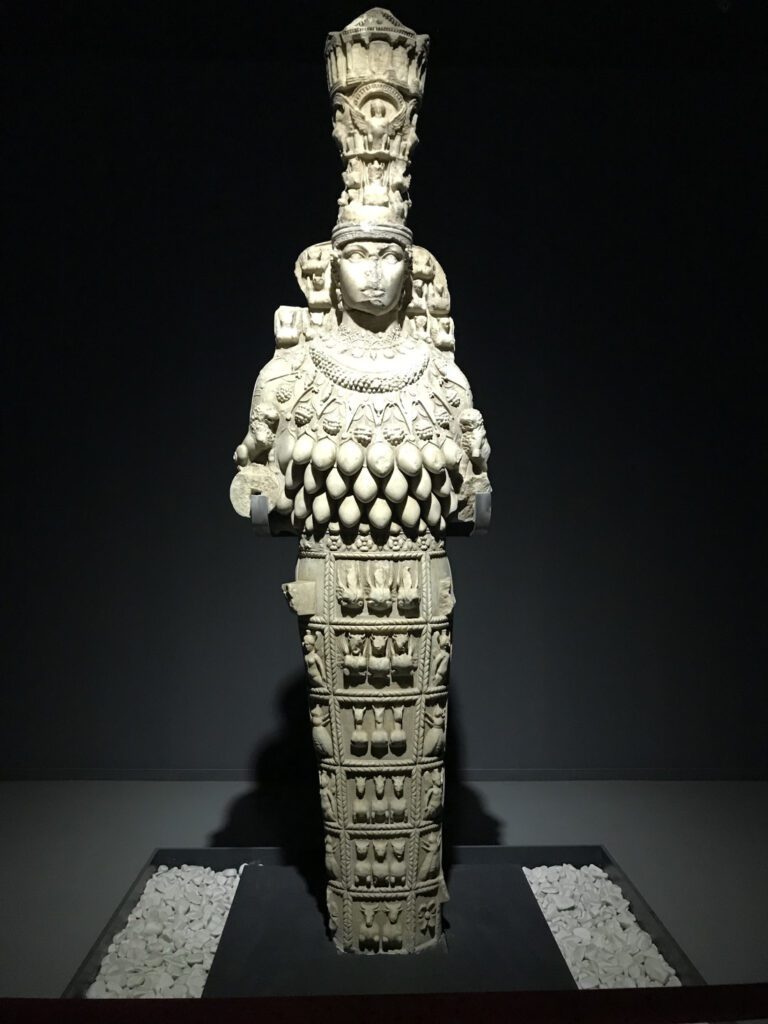
The vast archaeological site was first surveyed in the 19th century, and inevitably, many pieces have been found at the British Museum and Ephesos Museum in Vienna. However, the ancient city has yielded enough artifacts to fill several museums, and the Ephesus Archaeological Museum is an ideal complement. There are objects in these nine rooms from every stage of the city’s past, from Mycenaean to Ottoman. Each room specializes in a different category, be it coins, the terrace houses of Ephesus, the city’s nymphaeums, or the cult of Kybele. There are Mycenaean vessels, sarcophagi, busts of Socrates, Emperor Augustus, Livia, and Balbinus, and magnificent sculptural groups from monuments like the Fountain of Domitian. The high point is the statues of Artemis from the world-famous temple Colossal Artemis (1st century CE) and the impeccably preserved Beautiful Artemis (2nd century CE).
Güvercinada (Pigeon Island)

Kusadası’s historical wonder is a citadel in the bay at the end of a 350-metre causeway. This defense was built on the orders of Hayreddin Barbarossa (1478-1546), and the low outer walls date from the Greek Orlov Revolt in the 1770s. Güvercinada is laid out like a city park, with a raised wooden platform and excellent photo opportunities from the battlements, gazing back to Kusadası and its harbor and backcountry. There are information boards here and there describing the local animal and plant life, and occasionally, you’ll see a rabbit hopping around. One exciting curiosity on show is the skeleton of a fin whale found at the Dilek Peninsula, a few kilometers south in the 1990s.
Dilek Peninsula-Büyük Menderes Delta National Park
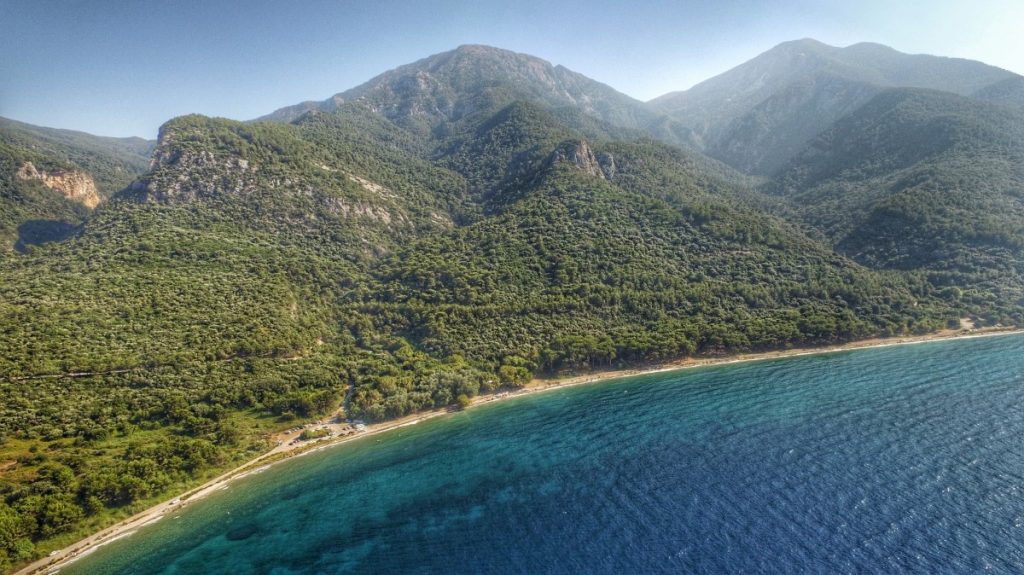
The mountains of this 27,500-hectare national park hover on the horizon south of Kuşadası, and it’s a journey well worth making. The park is made up of a rocky peninsula with Mount Mycale along its spine, while to the south, in a much wetter landscape, is the delta of the Büyük Menderes River. The park has dazzling biodiversity, from 800 different plant species to waterfowl like pelicans, egrets, and plovers to hyenas, jackals, and lynxes in the mountainous woodland. You can venture here in search of remote coves with crystalline seas and hunt down the remnants of ancient civilization at Karina, The Panionium, and Priene.
Ladies Beach
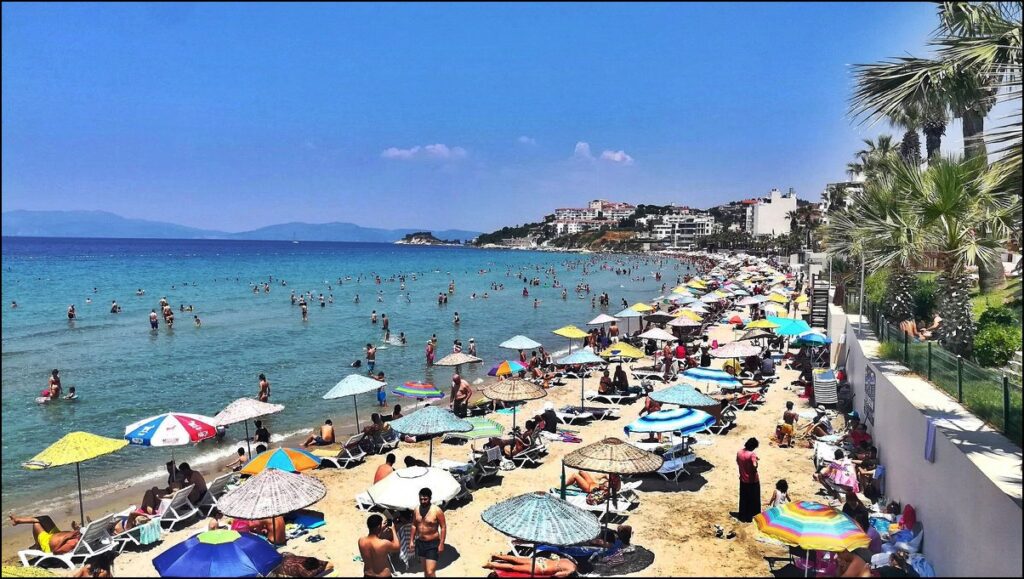
Fifteen minutes on foot or a brief ride on the minibus, this beach is one kilometer of soft sand on a west-facing bay. The name “Ladies Beach” is a holdover from the Ottoman days of segregation, and low, rippling waves lap the shore here. This beach is for families, thanks to a smooth slope and sizeable shallow area where non-swimmers can paddle. Understandably, it’s a popular place to spend a warm afternoon, and there are beach clubs all around the bay, renting out sun loungers and parasols. Brimming with restaurants, cafes, and shops, the promenade is set slightly above the beach and has a seriously romantic view across to Samos at sunset.
Uzun Plaj (Long Beach)
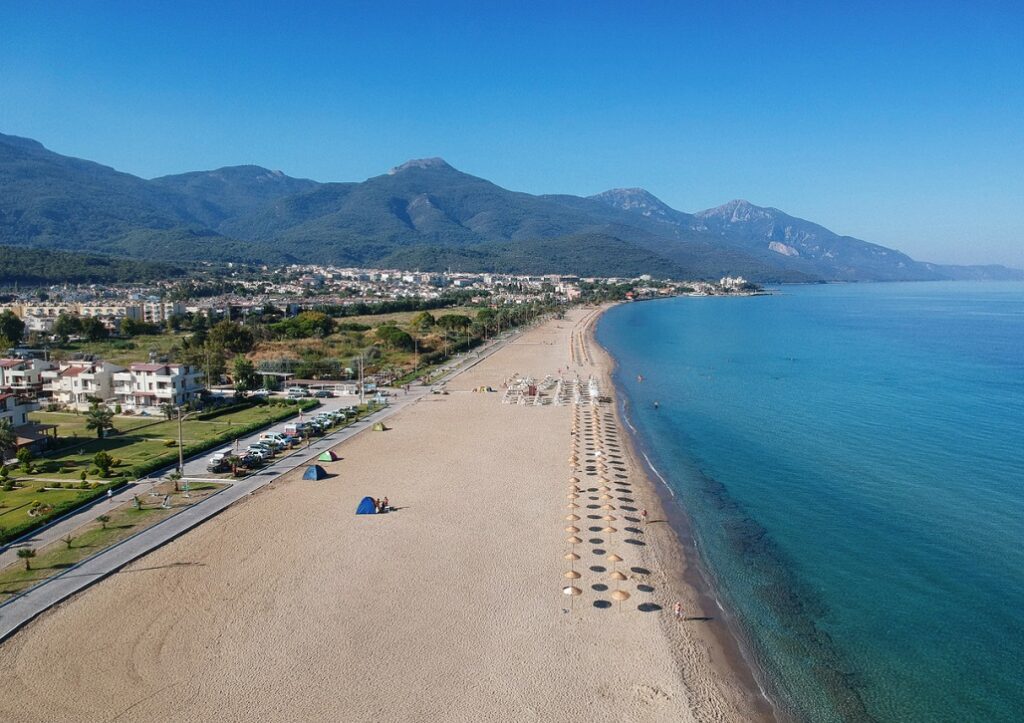
True to its name, this sandy beach around the headland from Ladies Beach is 18 kilometers long and is traced by tourist infrastructure for its entire length, down to the town of Güzelçamlı. The first thing to say about Uzun Plaj is that the views south are majestic, as well as the formidable ridge of Mount Mycale on the Dilek Peninsula. Like Ladies Beach, Uzun Plaj has low, rolling waves, but even though this bay is more exposed to the sea, it shelves gently, and there’s a lot of knee-high water so children can splash safely. At the top end, close to Kuşadası proper, is the Tortuga Pirate Island Theme & Water Park, one of two big water-themed attractions in the area.
Şirince Village

Eight kilometers east of Selçuk is a picture-perfect village in the mountains. Until the population exchange after the First World War, Şirince was mainly home to Ottoman Greeks. The town has signs of habitation going back well before, including the remains of Roman-era aqueducts that would have fed Ephesus. With white Greek-style houses cascading down the side of a valley, the village is in an idyllic landscape of vineyards, cypresses, peach orchards, and olive groves. You can come to investigate Şirince’s knot of twisting, traffic-free alleys framed by whitewashed houses and walled gardens. In summer, there are plenty of stalls selling spices, handicrafts, and local wine, and if you need a pit stop, you can pause for a hit of Turkish coffee.
Meryemana (House of the Virgin Mary)

Kuşadası Harbour
Partly because it’s the primary way of reaching Ephesus by water, Kuşadası has a lively harbor, bookended by Güvercinada on the south side and an opulent new marina to the north. In the years up to 2020, Kuşadası received 600 cruise boats annually. And if you’re up for a day trip to the Greek island of Samos, this is the place to embark. The harbor is a prime place to stroll, shop, watch the sun go down, cool off with a drink, grab a bite, and see and be seen. Along the modern-looking Atatürk Boulevard, there’s something for every palate, including international chains like Starbucks and Domino’s. Roughly halfway along, on a little nub of land, is El Heykeli, a scenic viewpoint with a sculpture of a hand-releasing dove.
Öküz Mehmed Pasha Caravanserai
Close to the waterfront in the center of Kuşadası, you’ll find yourself at the crenelated walls of a 17th-century caravanserai. Built-in the 1610s on the orders of two-time Grand Vizier Öküz Mehmed Pasha, this was a custom house and inn for merchants arriving by water. The grand marble entranceway is oriented north to face the harbor, and there’s an information board right here telling the 400-year story of the building. The caravanserai was in ruins come the 1950s but was restored in stages up to the 1990s. There’s a 25-room hotel and an open-air restaurant in the courtyard. Still, you can go through to get a sense of this space and the two levels of galleries with pointed arches around it.
Çamlık Railway Museum
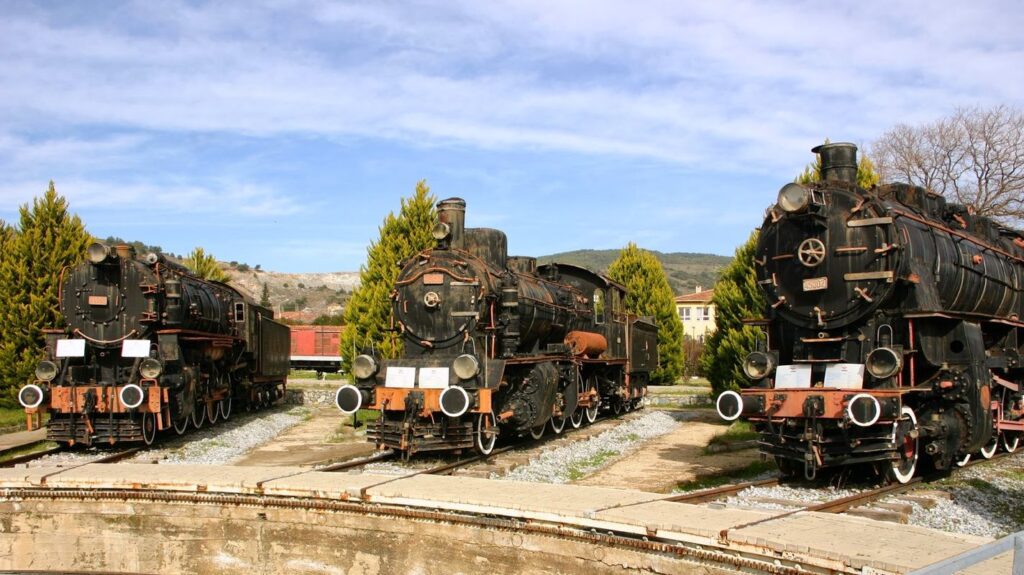
A short journey inland from Kuşadası is Turkey’s largest railway museum, with a formidable collection of steam engines. There are 33 steam locomotives here, dating from the 1890s to the 1950s, 18 of which are set around an impressive 18-rail turntable. Among the manufacturers are Krupp, Henschel, NOHAB, Borsig, and Maffei, while the oldest from 1891 is by the British firm Stephenson. You can hop into all the locomotive cabs, and nine historic carriages must be checked out. On a more somber note, also sitting outside is engine 45501, which was involved in the Yarımburgaz Train Disaster of 1957, a head-on collision claiming the lives of 95 people.










